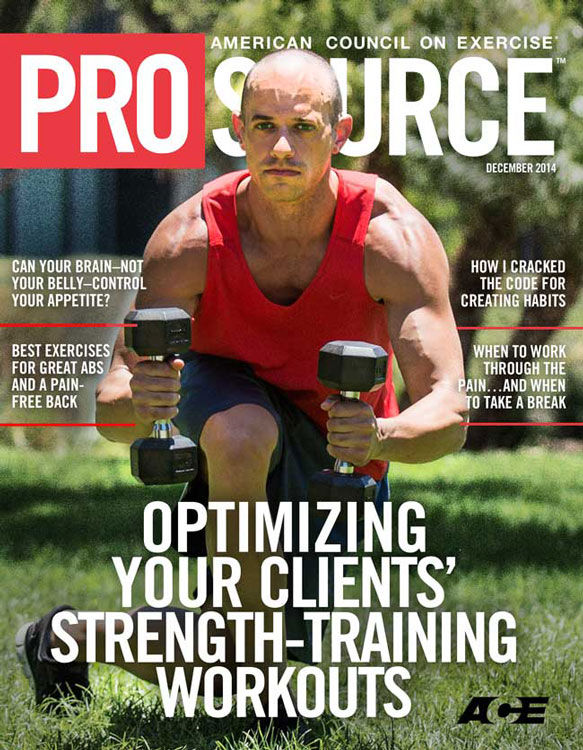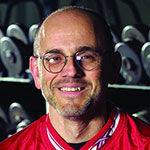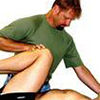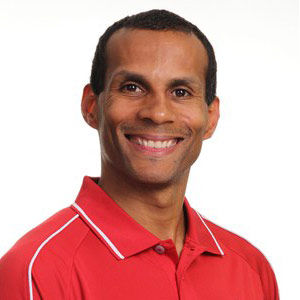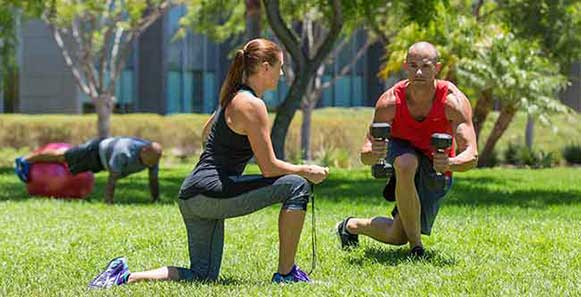
As anyone in the fitness industry can attest, there seems to be an endless supply of information on the most efficient training methods for increasing muscle mass, improving strength, burning fat or enhancing definition. From high-intensity interval training and exercising barefoot (or in minimalist shoes) to functional training on a variety of circus-like implements, it can be a challenge for personal trainers and group fitness instructors to sort through all of the exercise fads and gimmicks to identify the best ways to help clients and class participants get results. Whether you’re just starting your career or you’ve been working in the fitness industry for years, it’s important to acknowledge that any exercise can help a client as long as it relates to his or her goals, existing level of fitness and movement skill.
Helping Clients Get Results
In general, many training clients and group workout participants come to us wanting to tone up and lose weight. Toning up refers to improving muscle definition and is often the by-product of increasing muscle strength. Losing weight requires creating a negative energy balance, where an individual is expending more calories through physical activity than he or she is consuming through dietary intake. Increasing muscle strength and definition requires activating as many muscle motor units as possible within a particular muscle. A muscle motor unit is the bundle of muscle fibers connected to a single motor nerve responsible for generating a contraction. The process of activating the muscle motor units within an individual muscle is known as intramuscular coordination. The term intermuscular coordination refers to the action of multiple muscles working together to generate force against an external resistance.
The Functional Movement and Resistance Training component of the ACE Integrated Fitness Training® Model (ACE IFT® Model) of exercise program design organizes exercises according to their physiological stimulus on the neuromuscular and skeletal systems. Exercises from the stability and mobility phase (phase 1) focus on either improving the function of joints designed to provide stability or on enhancing the ability of joints that are structured to allow multiplanar movement. The purpose of exercises from the movement phase (phase 2) is to integrate stability and mobility to improve movement efficiency. The load phase (phase 3) of training can use either external resistance to create a mechanical overload or body-weight movements to reach momentary failure (which can induce metabolic fatigue), both of which can innervate the type II muscle fibers responsible for improving muscle-force output. Finally, the performance phase (phase 4) of training adds a velocity component by applying exercises that require muscles to either generate an explosive force to enhance power or sustain a force over an extended period of time to improve endurance.
The principle of specificity states that the body will experience physiological adaptations in response to the specific exercise stimulus imposed. This makes exercise selection one of the most important variables of program design because the specific exercises a client performs during a workout can determine whether he or she achieves a desired outcome. For example, if a client has a specific aesthetic goal requiring large, sculpted muscles, then specialized machines or isolation exercises with dumbbells can offer the best solution because they focus on one muscle or muscle group at a time. Isolation training works because it focuses on intramuscular coordination to increase the size and definition of a particular muscle. While isolation training can yield significant results in terms of “toning up,” the downside is that it can require hours in the gym to ensure that all muscles are properly engaged. As such, it is simply not an efficient strategy for burning the calories necessary for significant weight loss.
A key feature of the ACE IFT Model is that it acknowledges that exercise is a function of movement. The movement phase is based on this concept and recognizes that helping clients improve efficiency in the compound movement patterns of squatting, lunging, pushing, pulling and rotating through body-weight exercises is essential before adding external resistance or working to fatigue during the load phase. An exercise based on a compound movement burns more calories than an exercise focused on an individual joint or muscle group. In addition, physical activity involving compound, multijoint exercises can stimulate intramuscular coordination within a specific muscle, which is required for improving definition, while also creating the intermuscular coordination responsible for generating a greater demand for oxygen, thereby increasing the total amount of energy expended.
There is a secret shared by many top personal trainers and strength coaches: Training programs designed to help clients reach their goals do not require exercise selection to be overly complicated or gimmicky. Whether clients have aesthetic goals such as toning up or performance-based objectives that can include losing weight, using compound exercises belonging to either the movement or load phases of the ACE IFT Model is an efficient exercise program-design strategy. Because compound movements can result in both intra- and intermuscular coordination, a number of experts strongly believe that using either body weight or external resistance to perform these movements is essential for any strength-training program. While these types of exercises may seem old-fashioned or rudimentary when compared to many modern machines or functional-training methods, it turns out that many top trainers and coaches—including those interviewed for this article (see sidebar)—don’t get fancy with exercise selection. Instead, they rely on the compound movements of squatting, lunging, pushing, pulling or rotating for one simple reason—because they work.
Training the Lower Body
Lower-body exercises can be organized into squatting or bending movements, where both feet are in contact with the ground at the same time, or lunging (single-leg) movements, where only one foot might be in contact with the ground or the legs are alternating from side to side. The most effective lower-body exercises identified by experts tapped for this article include two squatting movements and two single-leg movements:
Dumbbell goblet squat
Barbell deadlift
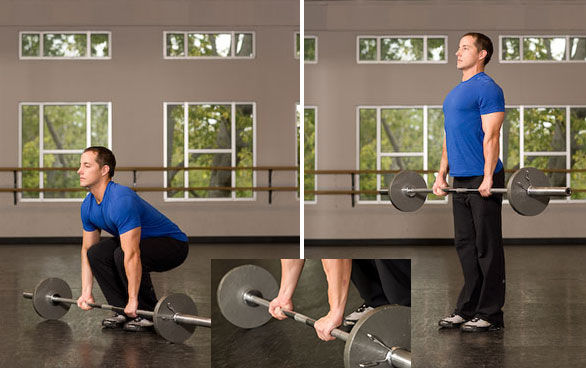
Split-leg squat (also known as the Bulgarian split-leg squat)
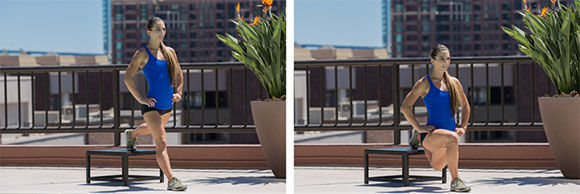
Single-leg Romanian deadlift (RDL)
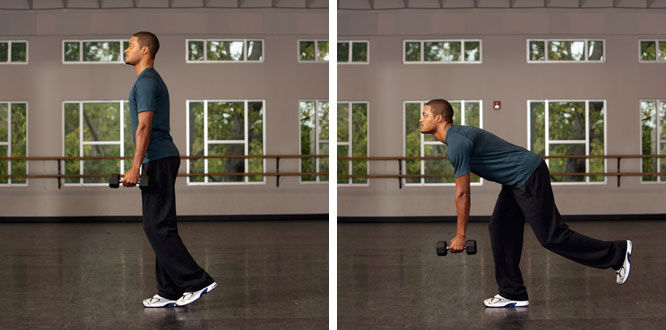
Todd Durkin is a San Diego-based ACE Certified Personal Trainer and owner of Fitness Quest10. Durkin works with a number of professional athletes who care about performance as well as a number of “regular Joes and Janes,” focused on improving their appearance. One of Durkin’s favorite lower-body exercises for his clients is the kettlebell goblet squat (which can also be performed using a dumbbell, as in the photo above), because it keeps the mass of the resistance close to the body’s center of gravity and is more comfortable than supporting a barbell in a traditional back squat. Durkin also uses the single-leg RDL, because it focuses on the posterior chain muscles of the hip extensors, which is important for athletes who need to stay a step of their competition. They also are effective for those who simply want to look great in their favorite pair of jeans.
Tony Gentilcore is a strength coach and co-founder of the Boston-area Cressey Sports Performance. He’s also a blogger and writer for Men’s Health. Jen Sinkler is a personal trainer based in Minneapolis who promotes fitness, food, happy life and general health topics to her clients. She’s also a blogger and frequent contributor to a variety of national health magazines. When asked about their favorite lower-body exercises, both Gentilcore and Sinkler were quick to respond with the same exercise: the barbell deadlift.
“The action of a deadlift directly counteracts the act of sitting by extending the knees and hips,” explains Sinkler, “and ends in a ‘standing tall’ posture, with the head balanced directly over the midline of the body.” Plus, she explains, “there are many variations of the deadlift, giving people of all strength levels and anthropological differences (limb length, for example) the chance to execute a deadlift that works for their body type.”
Gentilcore works with a number of high-performing athletes and loves the deadlift. “You would be hard-pressed to find another exercise that trains the entire body as well as the deadlift does. While it’s predominately a lower-body exercise (hamstrings, glutes, quadriceps), it’s also a fantastic upper-back exercise. It also trains grip strength and can offset many of the postural imbalances many people accumulate sitting in front of a computer all day. In many ways, it’s the ultimate strength and muscle building exercise.” Gentilcore also notes that when it comes to working with athletes, the deadlift can help improve key ingredients of athleticism such as sprinting and jumping.
Mike Boyle is another Boston-area strength coach and owner of Mike Boyle Strength and Conditioning. Boyle, who has helped Boston University win two NCAA Division I National Championships in hockey, says his favorite lower-body exercise is the split-leg squat. “Athletes move on one leg at a time the majority of the time and split squats help develop strength, balance and mobility, all with one move.” In addition, Boyle favors training on one leg at a time because it necessitates using lighter loads, which can reduce the risk of injury from training.
Training the Upper Body
Upper-body exercises can be categorized into pushing or pulling movements. Pushing exercises can happen either in front of the body (like a push-up) or in an overhead manner (like a shoulder press). Likewise, pulling movements can include exercises that bring a mass closer to the body from the front (like a seated or bent-over row) or from an overhead position (such as a pull-up or lat pull-down). These are the exercises our experts chose for upper-body strength pushing and pulling movements:
Push-up

One-arm press

Pull-ups
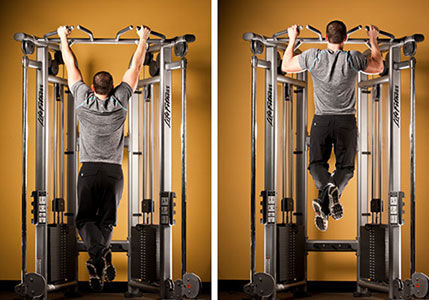
Chin-ups

Interestingly, none of the experts consulted for this article included a traditional barbell bench press in the list of their essential strength training exercises, even though it is considered an essential exercise for many popular training programs. Durkin prefers the dumbbell bench press because it offers greater range of motion than the barbell variation. When asked to identify their “go-to” exercise for developing upper-body pushing strength, the push-up was the clear winner.
Anthony Wall, ACE’s director of professional education and a champion Master’s level sprinter, is a fan of the push-up because, depending on the number of repetitions performed and the speed of movement employed, it can be used for endurance, strength or power. Boyle is another proponent of the push-up, especially when performed on a BOSU Balance Trainer (dome-side down), because it creates an additional challenge for the muscles responsible for scapulothoracic and core stability.
Dan John, a fitness educator and strength coach from the Salt Lake City area, prefers the one-arm press for overhead pushing movements. “It involves the whole body and requires the lifter to use core strength to maintain a stable base while pressing the weight overhead,” explains John. “I’ve found that most people tend to do a full range of motion (no cheating) without any reminding.”
When it comes to pulling movements, our experts all agreed that pull-ups and chin-ups using body weight, or modified with an elastic band to provide support, are the best exercises for getting results. Even though it is often perceived that pull-ups are too challenging for women, Sinkler is a fierce advocate of the exercise, especially for females. “Pull-ups and chin-ups are the royalty of upper-body movements,” says Sinkler, “and for some, the most difficult to do unassisted. Luckily, there are many different variations to play with, as well as many ways to vary the movement to fit your goals and your comfort levels.” For example, explains Sinkler, “you can regress the movement by adding superbands or boxes to aid you in getting your chest up and chin over the bar, making the movement accessible for anyone who wants to give the exercise a shot.”
John agrees: “When done correctly, the chin-up is the best anterior chain exercise.”
There is often confusion about the difference between pull-ups and chin-ups. “Generally speaking, pull-ups (with a pronated, overhand grip) target the mid- and upper-back muscles,” says Sinkler, “while chin-ups (with a supinated, or underhand grip) hit more of the muscles of the biceps. You can also experiment with neutral grip (palms facing each other) the hand positioning distributes weight evenly throughout the joints and can, for some, feel more friendly toward the elbows and shoulders.”
Another option for pulling movements favored by both Boyle and Durkin is the TRX row. “It easy to modify for any client,” explains Boyle. “And, because it allows the shoulders to move from internal rotation (thumbs down) to external rotation (thumbs up), it is very shoulder-friendly.”
Rotational Exercises
Rotational movements are often-overlooked exercises that are essential for optimal movement efficiency. The parts of the body that allow the greatest mobility during rotation include the intervertebral segments of the thoracic spine and the ilio-femoral joints of the hips. During the gait cycle, as the upper body rotates to the right (driven by the forward movement of the left arm swinging) the pelvis is rotating to the left (influenced by the action of the right leg swinging forward). One exercise that enhances both the mobility and strength of the thoracic spine and hips is the Turkish get-up (TGU).
Gray Cook, a physical therapist, strength coach and inventor of the Functional Movement Screen, is a big fan of the TGU because it requires balance, posture, strength and mobility. Cook considers the TGU a carrying exercise that is excellent for developing total-body strength. “If you could only do one exercise to complement an active lifestyle or set a foundation to become active, it would be hard to find a more complete movement.”
Designing the Program
Combining all of these exercises into one workout would create a challenging, but extremely effective total-body conditioning program (Table 1). Compound exercises are movement patterns involving a number of joints and, like any other movements, involve skills that need be refined with practice. Therefore, it’s important to remain consistent with exercise selection and avoid the temptation to change exercises with every workout. All of our experts agree that it is critical to first teach clients how to perform a movement with coordination and timing using only body weight before adding additional resistance. For example, Cook will break down the TGU into separate movements and teach each one independently before having a client attempt to execute the entire sequence in one motion.
If clients want to focus on the core, all of the exercises included in this workout require both the deep stabilizers and global movers of the core to be engaged for successful performance. For example, because the split-leg squats or the single-leg RDLs use only one leg at a time, both the internal and external obliques are recruited to create lumbo-pelvic stability to allow the hips to move through flexion and extension.
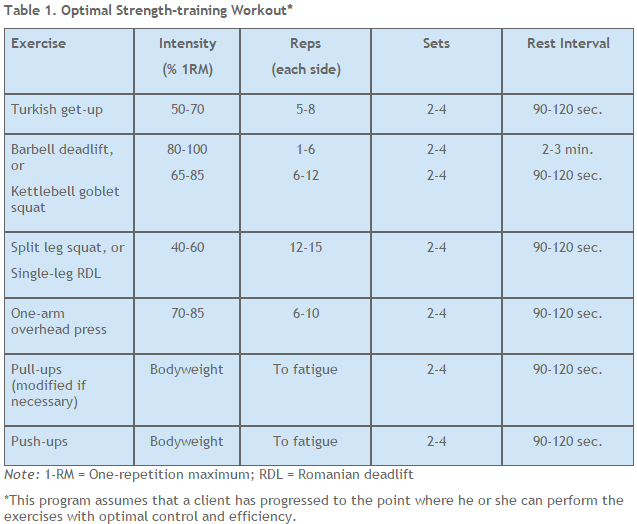
Conclusion
If you work with clients who want to improve strength and enhance muscle definition, or burn calories for weight loss, then some of the exercises that seem the most basic can actually be the most effective. This back-to-the-basics approach for strength training may not be sexy, but there’s no question that it provides results.





 by
by 